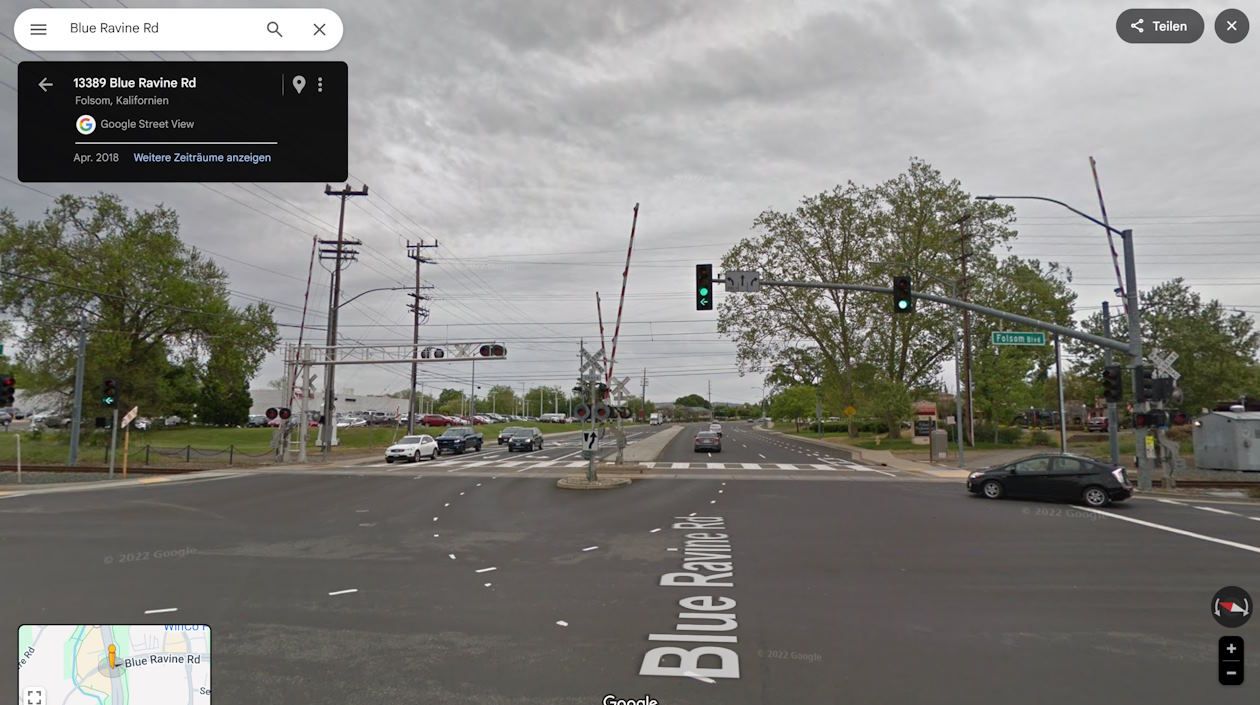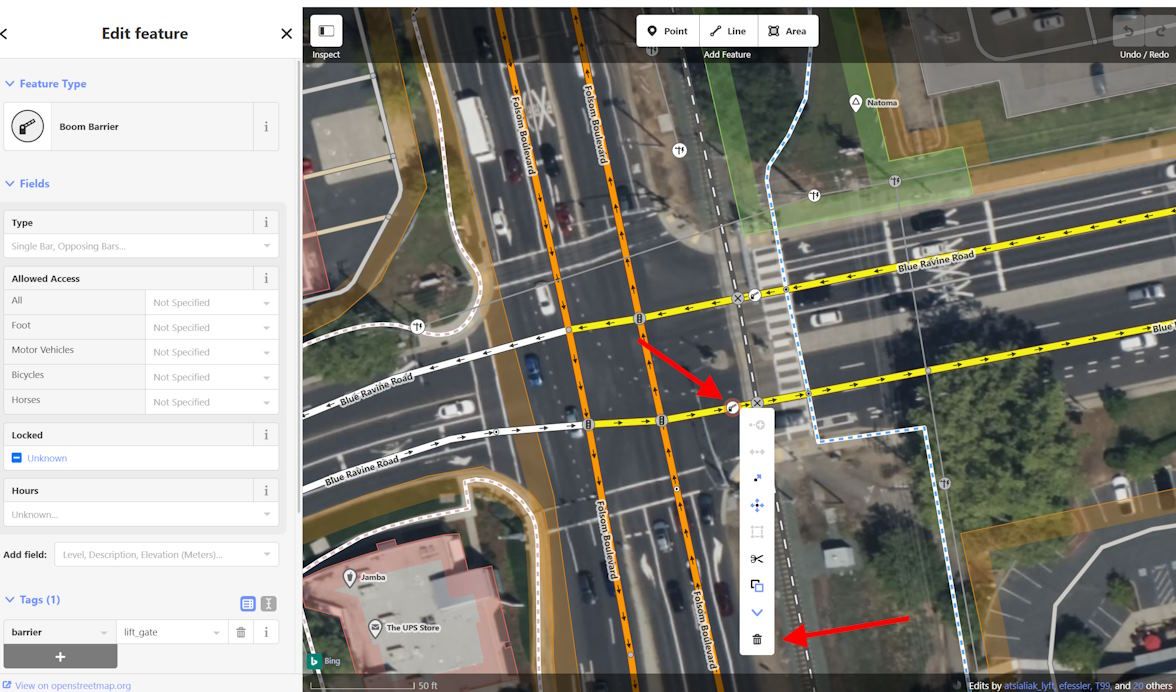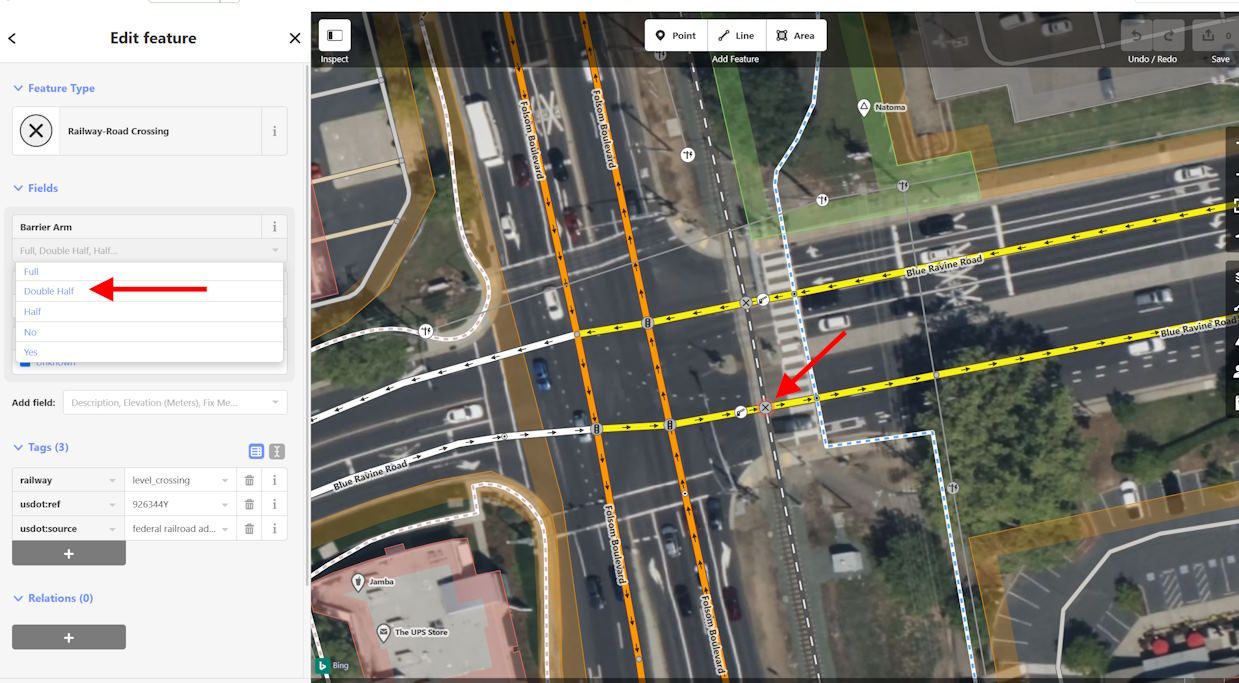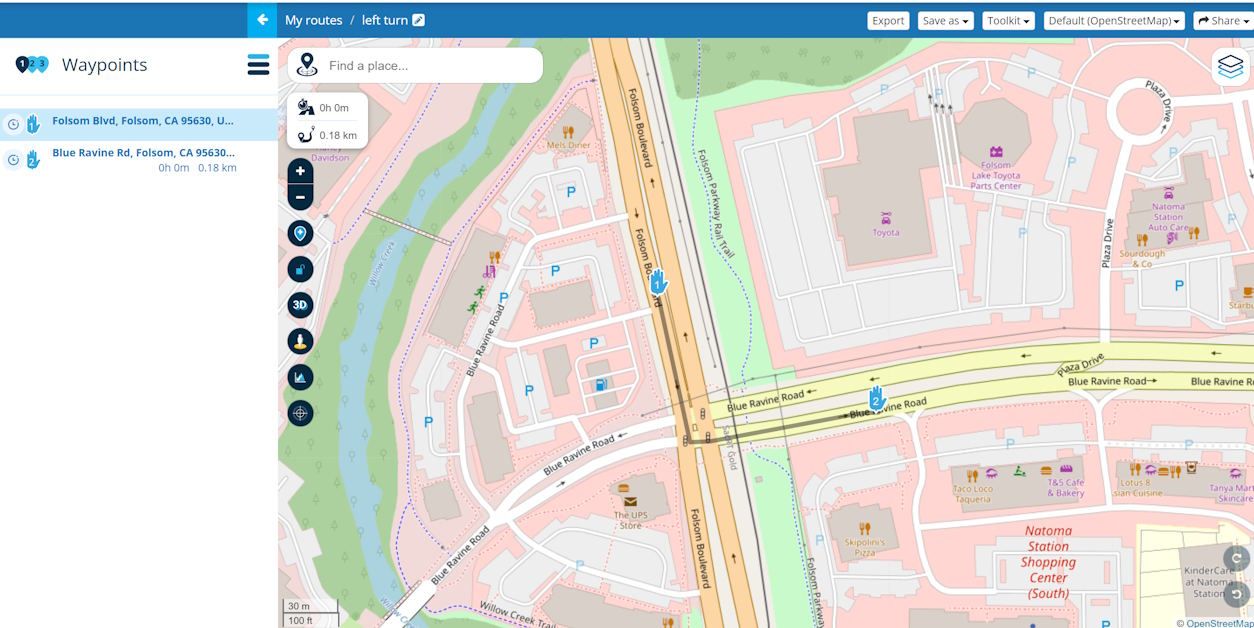Route ignores obvious left turn
-
I also thought it odd that there were signals shown in only three of the four corners but, then again, I don't understand the mapping "language."
 image url)
image url)@twinfan said in Route ignores obvious left turn:
I don't understand the mapping "language."
Here is an overview of all valid keys, their values, meaning and examples:
https://wiki.openstreetmap.org/wiki/Map_features
Search for railway:level_crossing and barrier:lift_gate; these are the key types related to this issue.
It is worth familiarising yourself with the different categories because there is an extra bonus: you can search for OSM POIs in a given area, export them as GPX and import them into MRA. This way, you can create your own POI libraries in MRA. We have discussed an example ("castles in the UK") here:
-
Thank you, @Martin-Wilcke . I was contemplating learning more about OSM editing but it is very complex and I wouldn't want to make things worse.
According to Google Street View, there is a railway crossing with two half barrier arms but no extra lift gate (this is the mapping error):

So, I recommend making the following changes (for both directions):
- Delete the lift gate barrier:

Add the "two-half barrier arm" attribute to the railway crossing:

-
Thank you, @Martin-Wilcke, I will give it a try. I use that intersection regularly, today in fact.
-
I made your recommended changes and checked the box asking for a review from an experience mapper, just in case. I also found another intersection about one mile earlier in the route that had a similar condition and revised it. This explains how MRA chose the route it did on my initial try. Thank you again for your guidance. I enjoyed learning about OSM!
Tom -
Thank you, @Martin-Wilcke, I will give it a try. I use that intersection regularly, today in fact.
-
I made your recommended changes and checked the box asking for a review from an experience mapper, just in case. I also found another intersection about one mile earlier in the route that had a similar condition and revised it. This explains how MRA chose the route it did on my initial try. Thank you again for your guidance. I enjoyed learning about OSM!
Tom@twinfan
It took a loooooong time (probably due to the refresh cycle of the OSM server used by MRA), but it finally works now!
-
@Martin-Wilcke, thanks for checking and nice to see it worked!
-
@twinfan
It took a loooooong time (probably due to the refresh cycle of the OSM server used by MRA), but it finally works now!
@Martin-Wilcke the refresh cycle is not to do with OSM,
an edit to the OSM map can appear & be publicly available within a matter of hours.As I understand it, MRA take a snapshot of the OSM map data & the timing of the snapshot is quite irregular,
it can lag by many many months as you have seen.Here map data can take from a few days to several weeks to update
MRA update their Here data a lot more regularly, I think with every MRA update -
@Martin-Wilcke the refresh cycle is not to do with OSM,
an edit to the OSM map can appear & be publicly available within a matter of hours.As I understand it, MRA take a snapshot of the OSM map data & the timing of the snapshot is quite irregular,
it can lag by many many months as you have seen.Here map data can take from a few days to several weeks to update
MRA update their Here data a lot more regularly, I think with every MRA update@Brian-McG said in Route ignores obvious left turn:
the refresh cycle is not to do with OSM,
an edit to the OSM map can appear & be publicly available within a matter of hours.I know. With other apps, this change was visible within a few days.
As I understand it, MRA take a snapshot of the OSM map data & the timing of the snapshot is quite irregular,
That's what I mean by
the OSM server used by MRA
Does MRA mirror the complete OSM map data on their own server?
-
@Brian-McG said in Route ignores obvious left turn:
the refresh cycle is not to do with OSM,
an edit to the OSM map can appear & be publicly available within a matter of hours.I know. With other apps, this change was visible within a few days.
As I understand it, MRA take a snapshot of the OSM map data & the timing of the snapshot is quite irregular,
That's what I mean by
the OSM server used by MRA
Does MRA mirror the complete OSM map data on their own server?
@Martin-Wilcke said in Route ignores obvious left turn:
Does MRA mirror the complete OSM map data on their own server?
Apologies if I misinterpreted your previous post, terminology often does not translate well.
e.g. for me the term "mirror" implies the same data is available in 2 or multiple locations at similar times.
So I would not use "mirror" regarding MRA's OSM data as it is out of date for a considerable amount of time compared to the data available from OSM. It is why I used the term "snapshot".Sorry, I do not know where or how MRA host / store their data, I would just be guessing.
Maybe someone else has the answer? -
@Martin-Wilcke said in Route ignores obvious left turn:
Does MRA mirror the complete OSM map data on their own server?
Apologies if I misinterpreted your previous post, terminology often does not translate well.
e.g. for me the term "mirror" implies the same data is available in 2 or multiple locations at similar times.
So I would not use "mirror" regarding MRA's OSM data as it is out of date for a considerable amount of time compared to the data available from OSM. It is why I used the term "snapshot".Sorry, I do not know where or how MRA host / store their data, I would just be guessing.
Maybe someone else has the answer?If we're being precise, we're not talking about the map data that is displayed, but rather about the data used for routing.
I assumed that MRA uses a service (i.e. a REST API) that takes over the routing and thus also accesses a server on which the routing data is stored.
If MRA stores the routing data on its server (yes, as a snapshot), then the developers must also have implemented a routing engine (presumably based on one of the available frameworks).
Regardless of how it is technically implemented, the OSM data is obviously updated in long cycles. However, we should bear in mind that MRA focuses on HERE data, which is why the time lag in OSM data is not so important in my view.

